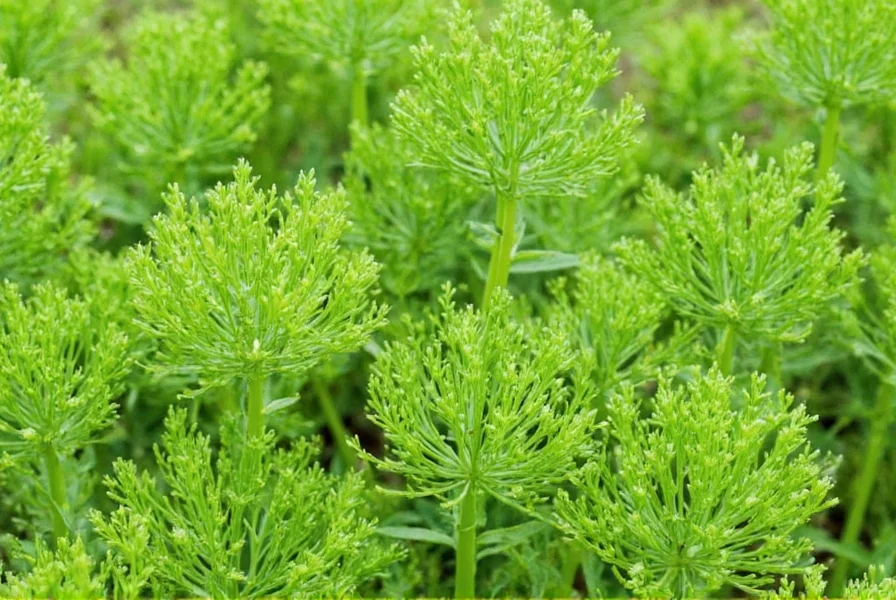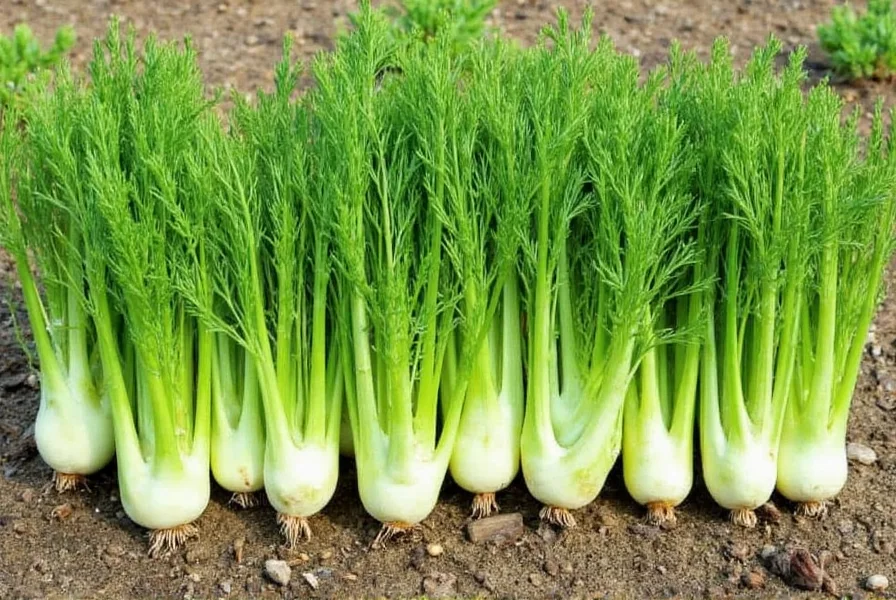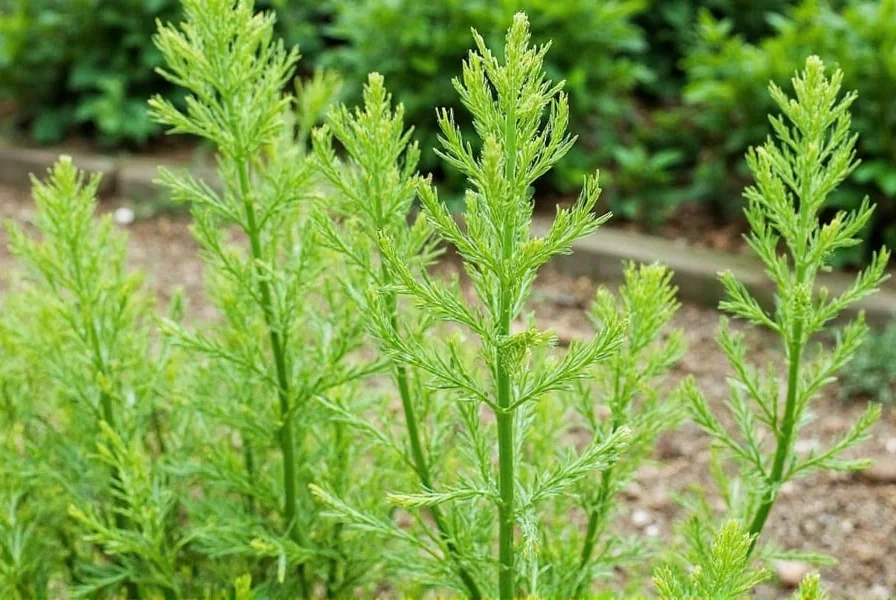Growing fennel from seed offers gardeners complete control over the plant's development cycle and access to varieties not typically available as transplants. This versatile herb with its distinctive anise flavor thrives in temperate climates and provides both feathery foliage and bulbous base for culinary use. Understanding the specific requirements for growing fennel from seed successfully ensures a bountiful harvest of this aromatic plant.
Essential Requirements for Growing Fennel from Seed
Fennel (Foeniculum vulgare) requires specific conditions to thrive when grown from seed. Unlike many herbs, fennel develops a deep taproot that makes transplanting difficult, which is why direct sowing fennel seeds produces better results than starting indoors. The plant needs at least 6-8 hours of direct sunlight daily and prefers soil with a pH between 5.5 and 7.0. Proper drainage proves critical, as fennel roots quickly succumb to rot in waterlogged conditions. When planning how to grow fennel from seeds outdoors, consider companion planting—fennel grows poorly near bush beans, kohlrabi, or tomatoes but pairs well with chamomile and dill.
Step-by-Step Guide to Growing Fennel from Seed
Timing Your Planting
The best time to plant fennel seeds depends on your climate zone. In most regions, sow seeds directly in the garden 2-3 weeks before the last expected spring frost. For continuous harvest, make successive plantings every 2-3 weeks through early summer. Gardeners in warmer zones (8+) can also plant in late summer for fall harvest. Fennel seeds germinate best in soil temperatures between 60-70°F (15-21°C), with fennel seed germination time typically ranging from 7-14 days under ideal conditions.
Soil Preparation
Prepare the planting area by loosening soil to a depth of 12-15 inches, removing rocks and debris that might interfere with taproot development. Incorporate 2-3 inches of well-rotted compost to improve soil structure and fertility. Avoid high-nitrogen fertilizers, which promote excessive leaf growth at the expense of bulb development. For heavy clay soils, consider raised beds filled with a mix of garden soil, compost, and coarse sand to ensure proper drainage for your fennel seed starting project.
| Planting Factor | Optimal Condition | Notes |
|---|---|---|
| Soil Temperature | 60-70°F (15-21°C) | Cold soil delays germination |
| Planting Depth | ¼ inch | Deeper planting reduces germination rate |
| Spacing | 6 inches initially, 12-18 inches after thinning | Adequate space prevents competition |
| Water Needs | Consistent moisture during germination | Reduce once established to prevent rot |
| Days to Harvest | 80-110 days | Varies by variety and growing conditions |
Sowing Fennel Seeds
When how to grow fennel from seeds outdoors, create shallow furrows ¼ inch deep using a hoe handle or your finger. Space rows 18-24 inches apart to allow for air circulation. Place seeds every 2-3 inches along the row, covering them lightly with soil. Water gently but thoroughly after planting. Maintain consistent soil moisture during germination—this represents the most critical phase in fennel plant care from seed. Avoid overhead watering once seedlings emerge to prevent fungal diseases.

Thinning and Ongoing Care
Once seedlings reach 2-3 inches tall, thin them to maintain 12-18 inches between plants. This spacing proves essential for bulb development in Florence fennel varieties. Water deeply but infrequently, providing about 1 inch of water per week. Mulch around plants to conserve moisture and suppress weeds. For bulb fennel, mound soil around the base when bulbs begin forming to blanch them, improving tenderness and flavor. Monitor for pests like aphids and caterpillars, which occasionally trouble fennel plants.
Harvesting Your Fennel
Harvest fennel fronds anytime once plants reach 12 inches tall, taking outer leaves first to encourage continued growth. For bulb fennel, harvest when bulbs reach 2-4 inches in diameter—typically 80-100 days after planting. Cut the entire plant at soil level or harvest individual outer stalks. Seeds mature 110-120 days after planting when flower heads turn brown. Understanding how long does it take to grow fennel from seed to each harvest stage helps maximize your yield.
Common Problems and Solutions
Gardeners often encounter specific challenges when growing fennel from seed. Poor germination frequently results from planting too deep or inconsistent moisture during the critical first two weeks. If seedlings bolt (produce flowers prematurely), this usually indicates stress from temperature extremes or irregular watering. Yellowing leaves may signal overwatering or nutrient deficiency. When growing fennel from seed step by step, remember that fennel naturally cross-pollinates with other varieties, so isolate different types if saving seeds. In humid climates, watch for powdery mildew—improve air circulation and avoid wetting foliage to prevent this issue.

Fennel Varieties for Seed Growing
Several fennel varieties excel when grown from seed. 'Florence' (or finocchio) produces the characteristic swollen bulbs preferred for culinary use. 'Bronze' fennel offers attractive purple-bronze foliage ideal for ornamental gardens. 'Perfection' represents a reliable open-pollinated variety with good bulb formation. For seed production, 'Roman' fennel develops abundant seeds with intense flavor. When selecting seeds for organic fennel seed growing, choose untreated, non-GMO varieties from reputable suppliers to ensure viability and purity.
FAQ: Growing Fennel from Seed
Can I start fennel seeds indoors before transplanting?
While possible, starting fennel seeds indoors isn't recommended due to their deep taproot. If you must start indoors, use biodegradable pots that won't disturb roots during transplanting, and move seedlings outdoors when they have just one true leaf. Expect lower success rates compared to direct sowing.
Why aren't my fennel seeds germinating?
Poor germination typically results from planting too deep (fennel needs light to germinate), inconsistent moisture during the first 10-14 days, or soil temperatures below 60°F. Ensure you're planting at ¼ inch depth, keeping soil consistently moist but not soggy, and waiting until soil warms sufficiently before planting.
How often should I water fennel seedlings?
During germination, keep the top inch of soil consistently moist. Once seedlings establish (about 2-3 weeks), reduce watering to about 1 inch per week. Mature fennel prefers deep, infrequent watering rather than frequent shallow watering, which encourages stronger root development and prevents root rot.
Can I grow fennel in containers from seed?
Yes, but use containers at least 12 inches deep to accommodate the taproot. Choose compact varieties like 'Zefa Fino' for container growing. Ensure excellent drainage and use a high-quality potting mix. Container-grown fennel requires more frequent watering than garden-planted fennel but offers the advantage of mobility to optimize sun exposure.
How do I prevent fennel from bolting prematurely?
To prevent premature bolting, plant fennel during appropriate seasons (avoid extreme heat), maintain consistent soil moisture, and provide some afternoon shade in hot climates. Choose bolt-resistant varieties like 'Orion' when available. Mulching helps regulate soil temperature and moisture, reducing stress that triggers bolting.











 浙公网安备
33010002000092号
浙公网安备
33010002000092号 浙B2-20120091-4
浙B2-20120091-4